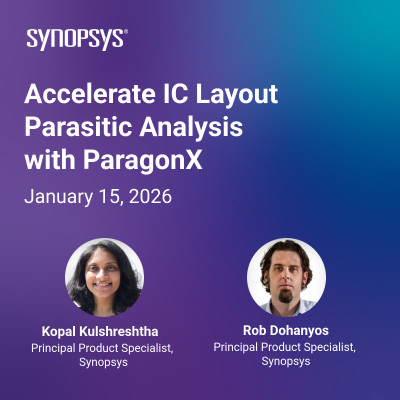PDF Solutions has been around for over 30 years. The company began with a focus on chip manufacturing and yield. Since the beginning, PDF Solutions anticipated many shifts in the semiconductor industry and has expanded its impact with enhanced data analytics and AI. Today, the company’s impact is felt from design to manufacturing,… Read More
Author: Mike Gianfagna
PDF Solutions and the Value of Fearless Creativity
DAC TechTalk – A Siemens and NVIDIA Perspective on Unlocking the Power of AI in EDA
AI was everywhere at DAC. Presentations, panel discussions, research papers and poster sessions all had a strong dose of AI. At the DAC Pavillion on Monday two heavy weights in the industry, Siemens and NVIDIA took the stage to discuss AI for design, both present and future. What made this event stand out for me was the substantial… Read More
Synopsys Webinar – Enabling Multi-Die Design with Intel
As we all know, the age of multi-die design has arrived. And along with it many new design challenges. There is a lot of material discussing the obstacles to achieve more mainstream access to this design architecture, and some good strategies to conquer those obstacles. Synopsys recently published a webinar that took this discussion… Read More
CAST Webinar About Supercharging Your Systems with Lossless Data Compression IPs
Much of advanced technology is data-driven. From the cloud and AI accelerators to automotive processing and edge computing, data storage and transmission efficiency are of critical importance. It turns out that lossless data compression is a key ingredient to deliver these requirements.
While there are both software and hardware… Read More
Scaling 3D IC Technologies – Siemens Hosts a Meeting of the Minds at DAC
3D IC was a very popular topic at DAC. The era of heterogeneous, multi-chip design is here. There were a lot of research results and practical examples presented. What stood out for me was a panel at the end of day two of DAC that was hosted by Siemens. This panel brought together an impressive group of experts to weigh in on what was really… Read More
DAC News – proteanTecs Unlocks AI Hardware Growth with Runtime Monitoring
As AI models grow exponentially, the infrastructure supporting them is struggling under the pressure. At DAC, one company stood out with a solution that doesn’t just monitor chips, it empowers them to adapt in real time to these new workload requirements.
Unlike traditional telemetry or post-silicon debug tools, proteanTecs… Read More
Perforce at DAC, Unifying Software and Silicon Across the Ecosystem
As the new name reflects, chip and system design were a major focus at DAC. So was the role of AI to enable those activities. But getting an AI-enabled design flow to work effectively across chip, subsystem and system-level design presents many significant challenges. One important one is effectively managing the vast amount of… Read More
Arteris Simplifies Design Reuse with Magillem Packaging
Many know Arteris as the “network-on-chip”, or NoC, company. Through acquisitions and forward-looking development, the footprint for Arteris has grown beyond smart interconnect IP. At DAC this year, Arteris highlighted its latest expansion with a new SoC integration automation product called Magillem Packaging. The announcement… Read More
Caspia Focuses Security Requirements at DAC
As expected, security was a big topic at DAC this year. The growth of AI has demanded complex, purpose-built semiconductors to run ever-increasing workloads. AI has helped to design those complex chips more efficiently and with less power demands. There was a lot of discussion on these topics. But there is another part of this trend.… Read More
Webinar – Power is the New Performance: Scaling Power & Performance for Next Generation SoCs
What if you could reduce power and extend chip lifetime, without compromising performance? We all know the importance of power optimization for advanced SoCs. Thanks to the massive build out of AI workloads, power consumption has gone from a cost or cooling headache to an existential threat to the planet, if current power consumptions… Read More




















Quantum Advantage is About the Algorithm, not the Computer